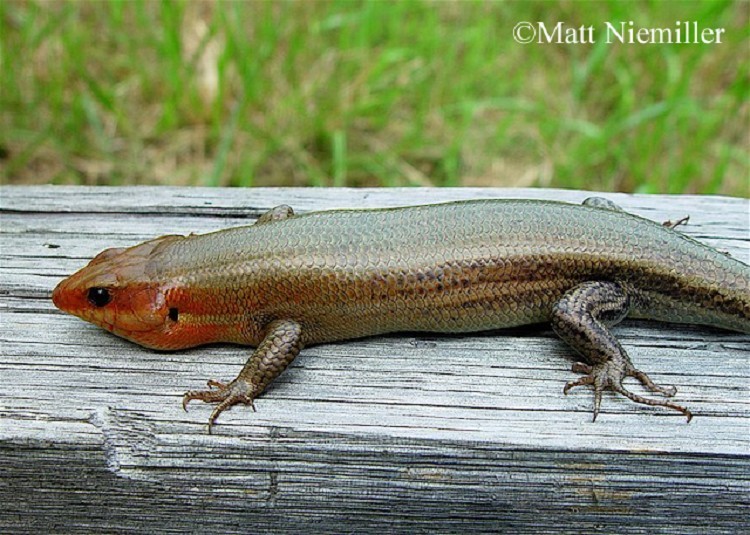Broad-headed Skink, Plestiodon laticeps
The Broad-headed Skink is the largest skink in Tennessee and can be found across the state, except the extreme northeastern corner.
Description: A large, smooth-scaled lizard (6.5 to 12.5 inches in length) with short legs and stocky body. Adult males, the namesake of this species, are olive-brown with large, swollen red heads during the breeding season. Adult females are variable, but usually have up to 5 light or faded stripes on brownish body. Juveniles have 5 distinct, light colored stripes on a black background with a bright blue tail.
Similar Species: Females and juveniles easily confused with Common Five-lined Skink and Southeastern Five-lined Skink; positive identification can only be assured by examination of the scales. Common Five-lined Skinks have 4 labial scales (along the upper lip between the nose and eye) and Southeastern Five-lined Skinks do not have enlarged middle row of scales under the tail.
Habitat: Prefers moist woodlands and edges of wood lots. Found on stumps, logs, fences, old farm buildings, and in trees.
Diet: Variety of invertebrates and some small vertebrates, including other skinks.
Breeding information: Adults court and breed in spring with males being very territorial. Females lay 5-20 eggs in rotten log cavities during the summer. They will guard them for 1-2 months until hatching.
Status in Tennessee: Common throughout Tennessee except in the mountains.
Fun Facts:
• Nicknamed the "red-headed scorpion."
• Most arboreal of the TN skinks, readily running up trees to escape danger.
Best places to see in Tennessee: Rural wood lots or farm fences and buildings.
